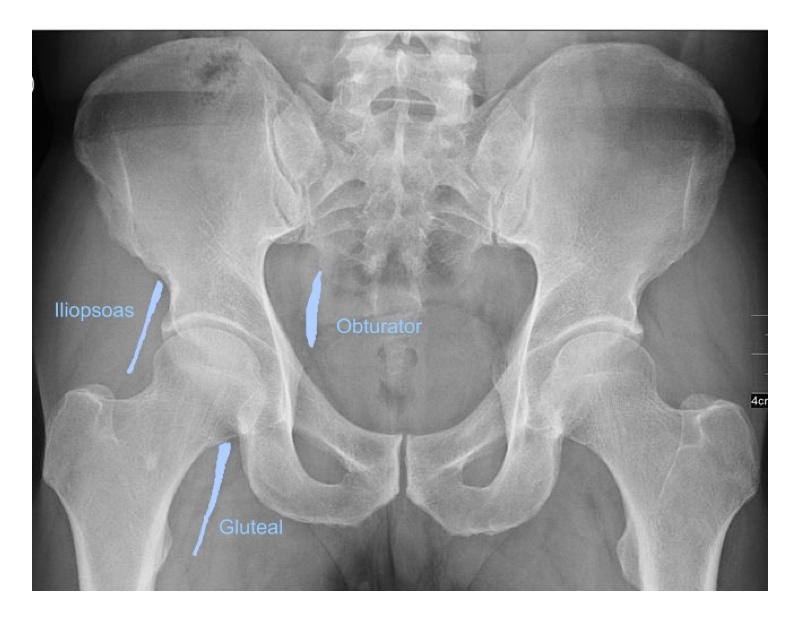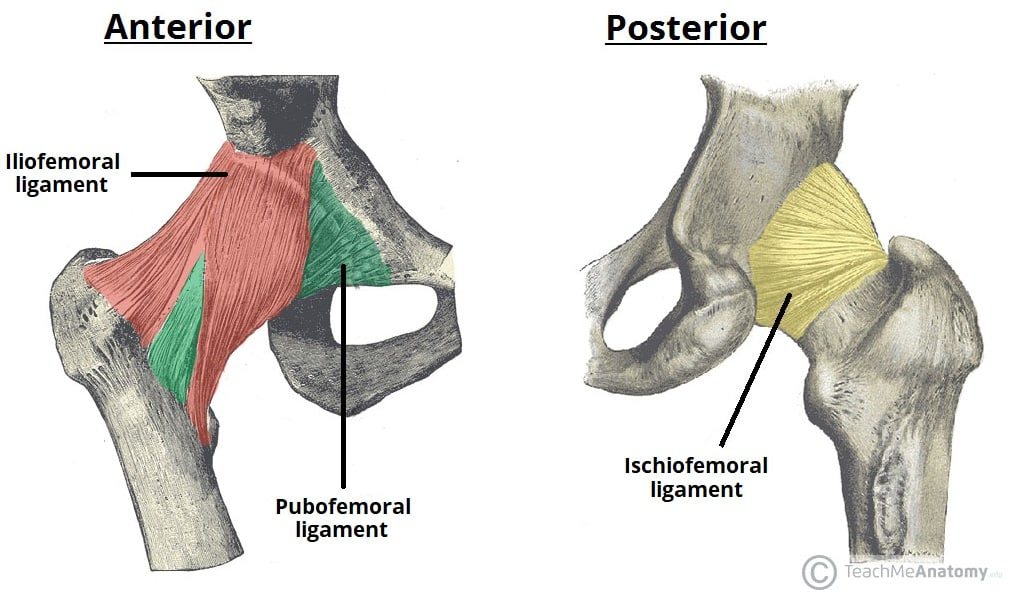The Anatomy and Function of the Hip Joint
Learn about the structure, articulation, ligaments, muscles, movements, and clinical significance of the hip joint, a ball and socket joint that allows for a wide range of movement and stability in the lower body.
In vertebrate anatomy, hip (or coxa in medical terminology; pl: coxae) refers to either an anatomical region or a joint.
Structure
The hip joint, also known as a ball and socket joint, is formed by the acetabulum of the pelvis and the femoral head, which is the top portion of the thigh bone (femur). It allows for a wide range of movement and stability in the lower body.

Articulation
The socket of the acetabulum is pointing downwards and anterolaterally. The socket is also turned such that the outer edge of its roof is more lateral than outer edge of the floor. Both joint surfaces are covered with a strong but lubricated layer called articular hyaline cartilage.
Ligaments
The hip joint is reinforced by four ligaments, of which three are extracapsular and one intracapsular. The extracapsular ligaments are the iliofemoral, ischiofemoral, and pubofemoral ligaments attached to the bones of the pelvis (the ilium, ischium, and pubis respectively). All three strengthen the capsule and prevent an excessive range of movement in the joint. The intracapsular ligament, the ligamentum teres, is attached to a depression in the acetabulum (the acetabular notch) and a depression on the femoral head (the fovea of the head).

Muscles and movements
The movements of the hip joint is performed by a series of muscles, resulting in three degrees of freedom and three pair of principal directions. Some of the hip muscles also act on either the vertebral joints or the knee joint.
Clinical significance
A hip fracture is a break that occurs in the upper part of the femur. Symptoms may include pain around the hip particularly with movement and shortening of the leg. The hip joint can be replaced by a prosthesis in a hip replacement operation due to fractures or illnesses such as osteoarthritis. Hip pain can have multiple sources and can also be associated with lower back pain.

